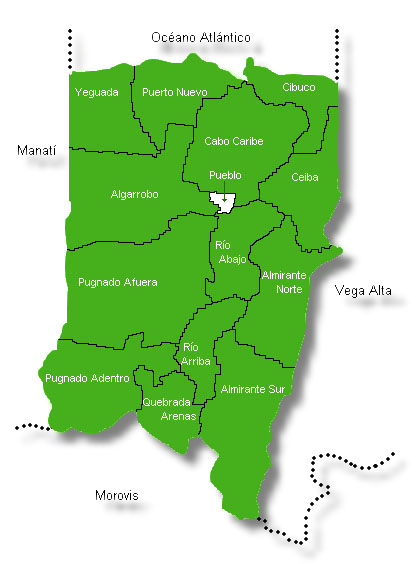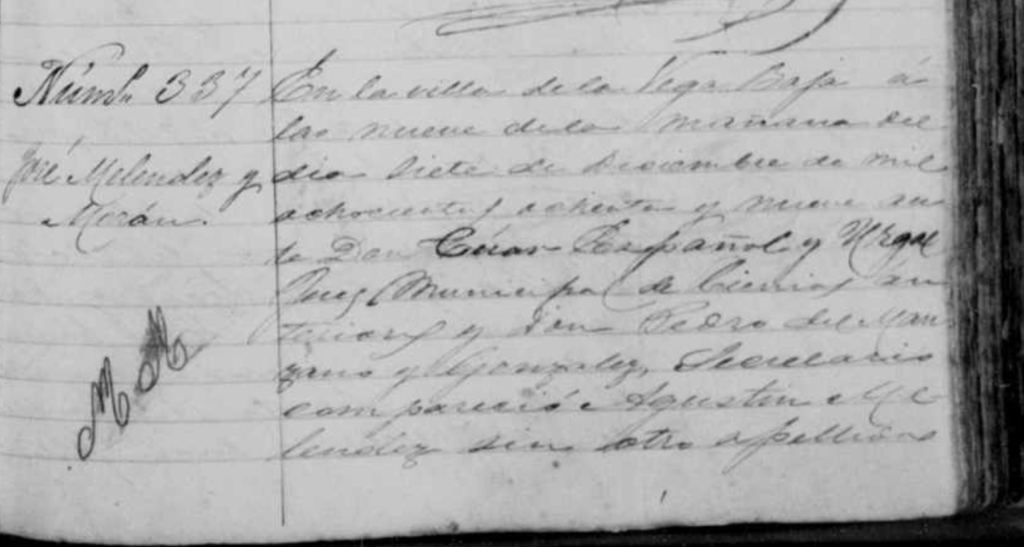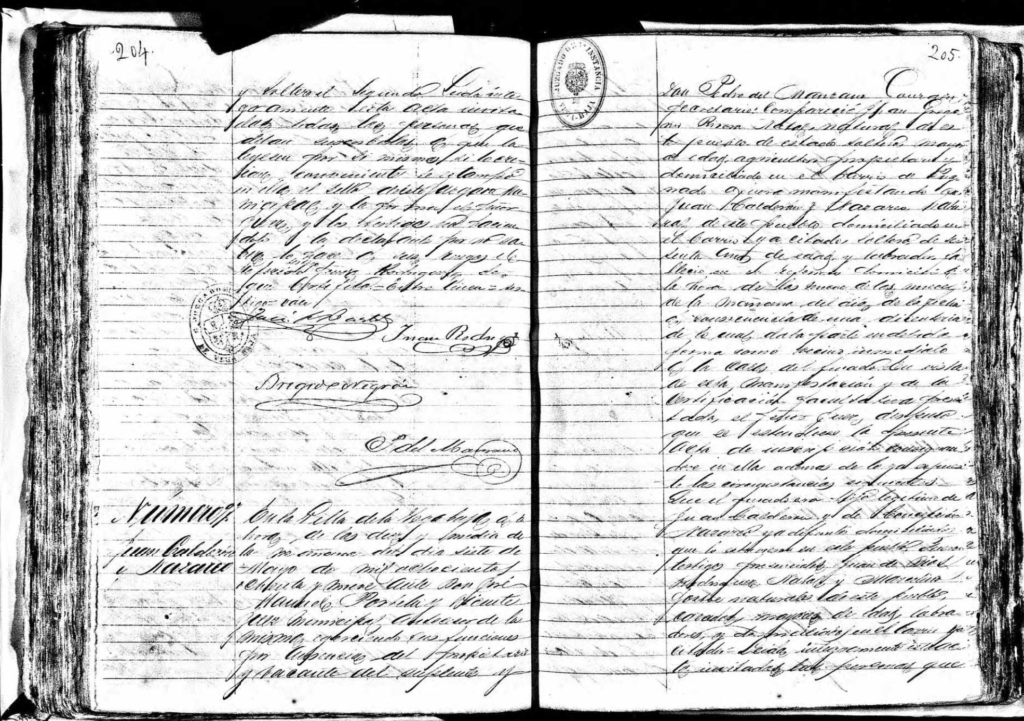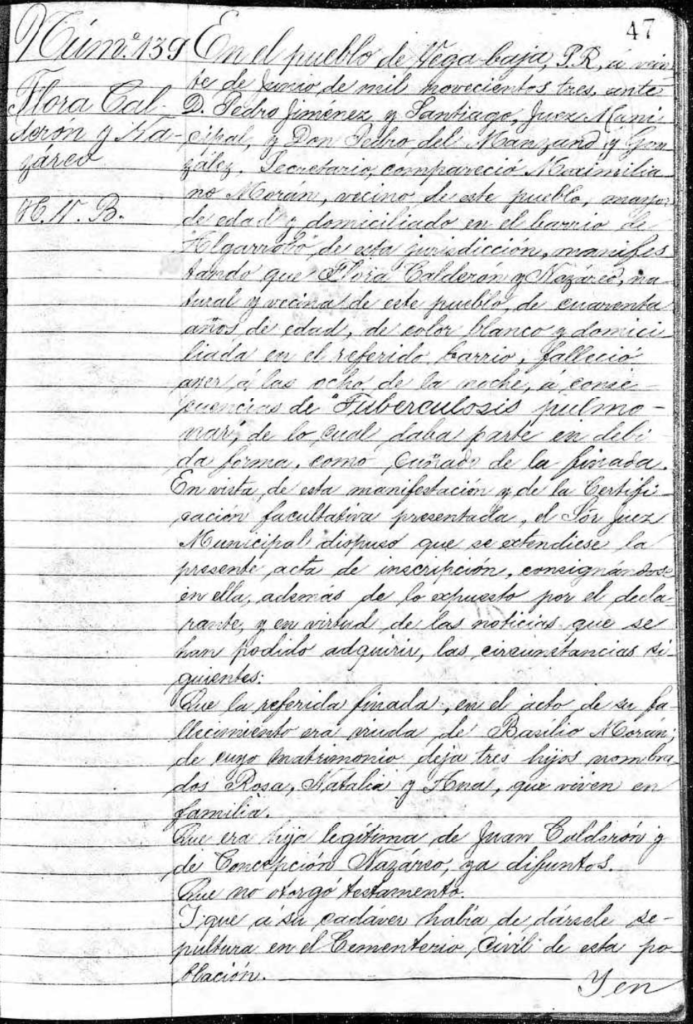When researching families in Puerto Rico, something to keep track of that might be different in a lot of other genealogical searches is the idea of “consanguinity”. Consanguineous can be defined as “sharing the same blood or origin, specifically descending from the same ancestor” (Merriam-Webster). The term can broken down into “con-” and “sanguis” meaning “together” and “blood”, in order words “of the same blood”. Many communities and religions prohibit these type of relationships and marriages because having children with someone closely related to you increases the odds of genetic diseases present in a dominant way in the next generation. Some people chose to be consanguineous in the past to keep money, land, and inheritance within the lines of their own families, while other communities were forced into it due to religious beliefs or lack of outside DNA when a community was insular given location, distance, etc.
In Puerto Rico, if your family has been on the island for a good hundred or more years, the likelihood that your lines cross increases over time. For example, on my dad’s side we see that my 3rd great-grandparents Valentín González Quiñones and his wife Feliciana González Mójica were related to a “segundo grado” (second degree), meaning their grandparents were related. In order to marry in the church, they would have had to seek a permission in order to be recognized as legitimate husband and wife by their religion (Catholicism).
Another line on my mom’s side of the family also married with consanguineous lines, my 4th great-grandmother Dorotea Ramos Martínez and her second husband Manuel Ruiz Soto. Though they appear consanguineous on their marriage, I was unable to find a permission for them at the Archivo Diocesano in Puerto Rico showing their connection. This means that though I know they are related, I do not know exactly through which line, especially since they overlap on two surnames: “de Soto” and “Martínez”. Their marriage was also at the “second degree”. I am not sure if the permission never made it to the Archivo or if it was even recorded at all. Despite that, the church in Maunabo was definitely aware of their relationship.
However, what happens when there are illegitimate births and lines that cross over that could be related? On my maternal grandmother’s side of the family there is a family, the “Meléndez Morán”, that seems to share bloodlines, however it occurs unofficially as the lines never officially married in the church. In this post I will trace that line showing how they are potentially connected across the branch “Calderón Nazario”.
José Meléndez Morán

My great-grandfather José Meléndez Morán was born in Pugnado Afuera, Vega Baja, Puerto Rico on the 22nd of November 1889 (2 days ago!). He was listed as the son of Agustín Meléndez (no second surname listed) and Ana Morán Nazario. The birth mentions that his paternal grandmother was Crescencia Meléndez and maternal grandparents were Basilio Morán and Flora Nazario. Flora at the time of his birth is listed as widowed and living in the same barrio as Agustín and Ana. José Meléndez Morán would live until 1984 having passed away in the same town he was born in, though he had spent most of his life in the town of Manatí, where my great-grandfather was born. My grandmother got a chance to meet her grandmother various times in her life and remembers him well.

In my previous blog entries linked above on Agustín Meléndez and Ana Morán, I focus a bit on their origins – Agustín for example, was listed as an illegitimate child on basically all of his records. However, entries for siblings list a father as Juan Calderón along with the mother Crescencia Meléndez, whom we saw listed in José’s birth record. Similarly, Agustín and his brothers use the surname “Calderón Meléndez” on the census record, showing us that they were not recognized but were aware of their father’s surname. Using the information provided on Juan Calderón by Agustín’s other siblings, I was able to discover the death of a Juan Calderón in Vega Baja.
Juan Calderón Nazario
When I wrote about Juan Calderón Nazario for the 52 Ancestor Challenge, I had already discovered that he died in Pugnado Afuera, Vega Baja, Puerto Rico – the same barrio where my 2nd great-grandfather was born. Juan’s declarant for his death wasn’t one of his children, potentially signaling the social distance there was between them in actual life. His death record does mention that he was the son of Juan Calderón and Concepción Nazario, both natives of Vega Baja and both deceased by the time Juan Calderón Nazario himself died.
Since Agustín was not recognized by his father, he never officially took the surname Calderón. However, using the census records and the siblings’ of Agustín’s children’s records, we see that there was an awareness of Juan Calderón in the family. My interest in consanguinity however occurs when I turn to research Ana Morán Nazario’s mother – Flora Nazario.

Flora Nazario
When looking into Flora Nazario I came across a death record for a Flora Calderón Nazario. Thinking it was one of the daughters of Agustín’s siblings, I ignored the record for a while. One day, I finally decided to take a look at it.
The death record mentioned that Maximiliano Morán came forward to declare the death of Flora Calderón “Nazareo”, who died from Tuberculosis on the 19th of June 1903 in Algorrobo, Vega Baja, Puerto Rico – this barrio is next door to Pugnado Afuera. Maximiliano is listed as the cuñado or brother-in-law to Flora. However, Maximiliano should be the son of this said Flora! It is interesting to note the surname listed as “Nazareo”, since in Juan Calderón’s death record it is written the same way.
In her death, Flora is listed as a widow for her husband Basilio Morán leaving behind three children – Rosa, Natalia, and Ana (this should be my 3rd great-grandmother). It then lists her parents as Juan Calderón and Concepción Nazario.
This should mean that Flora Nazario was actually Flora Calderón Nazario a sister to Juan Calderón Nazario – my 4th great grandfather.

an ongoing mystery...
The problem however is that I can not fully confirm if this family was consanguineous (another term for this is endogamous) and that my 2nd great-grandfather has a set of great-grandparents twice on his tree. Also, some records list Flora Nazario as Rosario Nazario – could these be two different women married to one Basilio Morán? Or was it one and the same?
For example, Felipe Morán Nazario married Dolores Adorno in 1889 where his parents were listed as Basilio Morán and Rosario Calderón. However, when he passed away in 1903, his parents were listed as Basilio Morán and Rosario Nazario. Since he was born about the 1860s, we don’t have a baptism record to further confirm his parents’ names.
Until I have more records I can only speculate that my 2nd great-grandfather José Meléndez Morán has a repeated pair of great-grandparents on his tree. Right now the evidence does points to an overlap between the Calderón and Nazario in my family.
Could the family have intentionally moved around names such as Flora and Rosario as well as purposefully decided not to marry knowing they would not be approved given their close connection? Where there ulterior motives for these types of relationships occurring – I don’t see anyone listed as “Don” or “Doña” and leaving behind testaments, meaning it didn’t seem they were trying to protect land or money. I would have to get my hands on some church records to further straighten out this mystery.
This is a perfect example of how genealogy sometimes is not very straight forward! Usually in genealogy we say that the proof is in the records, however, when dealing with social situations/contexts like out-of-wedlock children, hidden relationships, and purposeful manipulation of names or even events, it does make you question the validity of the records. However, DNA is now helping us to set the record straight as well!

